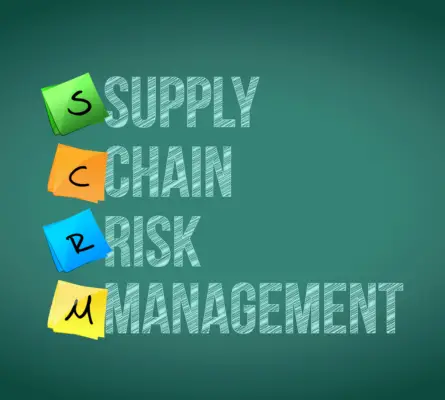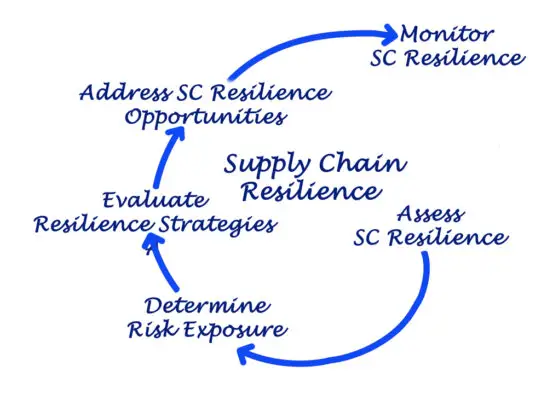Supplier risk and performance management solutions (SRPMS) are designed to assess, monitor, and mitigate potential risks from an organization’s supply chain. They also measure and analyze supplier performance to ensure efficiency and productivity.
The global business landscape is ever-evolving, and an organization’s ability to adapt, innovate, and stay ahead of the curve is critical to its success. The strategic importance of supplier risk and performance management cannot be overstated in today’s world, where supply chains are highly complex and integrated.
This publication delves into SRPMS, highlighting their significant role in overcoming key supply chains challenges like supplier reliability, supply chain disruption, compliance issues, quality of goods and services, and financial stability of suppliers.
The publication provides an in-depth look at how SRPMS can significantly enhance an organization’s operational efficiency, reduce costs, and minimize risks associated with suppliers.
The guide explores various solutions available in the market and their benefits. It also covers the importance of leveraging modern technological tools like Artificial Intelligence and Machine Learning to refine decision-making and enhance supply chain agility.
SRPMS enables companies to remain competitive while maintaining sustainable supply base and supplier relationships that foster long-term growth and success.
This is a roadmap to success for procurement specialists, supply chain managers, and executives. It offers valuable insights and practical solutions that can help navigate the complexities of modern supply chain management, optimize supply chain processes, and elevate an organization’s performance to new heights.
The journey toward unparalleled success starts with this publication, so why not dive into its pages and unlock the strategies that will revolutionize your supply chain and business?.

Objectives for Supplier Risk and Performance Management
How should I improve supplier management? The list outlined objectives for implementing Supplier risk and performance management programs.
Supplier Risk and Performance Management (SRPM) is critical to modern business operations. It involves identifying, assessing, and mitigating suppliers’ risks while evaluating and enhancing their performance. Here are some key objectives of SRPM:
Risk Identification: Identify potential risks associated with suppliers. These risks could be operational, financial, legal, or reputational in nature.
Risk Assessment: Evaluate the potential impact of identified risks. This involves using risk criteria and understanding the likelihood of a risk event and its potential impact on the organization.
Risk Mitigation: Develop and implement strategies to manage the identified risks. This could involve reducing the probability of a risk event, minimizing its impact, or transferring the risk.
Supplier Evaluation: Regularly evaluate supplier performance based on predefined metrics and Key Performance Indicators (KPIs).
Performance Optimization: Identify opportunities for enhancing supplier performance. This could involve process improvements, enhanced collaboration, or renegotiation of contracts.
Relationship Management: Build and maintain strong, mutually beneficial relationships with suppliers and service them. This could involve regular communication, collaborative problem-solving, and joint planning.
Continuous Improvement: Continuously monitor and review supplier risk and performance management processes, and make improvements as necessary. This ensures the process remains effective and up to date.
Supplier Risk and Performance Management Solutions
Supplier Risk and Performance Management Solutions (SRPMS) are advanced tools designed to assess, monitor, and mitigate potential risks that may arise from an organization’s supply chain.
They also measure and analyze supplier performance to ensure efficiency and productivity. In a global economy where supply chains are increasingly complex, these solutions are no longer just a provider of luxury but a necessity.
SRPMS are designed to tackle key challenges like:
Supplier reliability:
Refers to a supplier’s ability to deliver goods or services on time, in the correct quantity, and at the required quality. SRPMS can monitor a supplier’s past performance, track delivery times, and measure adherence to agreed-upon standards.
If a supplier consistently fails to meet expectations, the system can flag this for further action, such as supplier development initiatives or sourcing alternative suppliers.
Supply chain disruption:
Disruptions in the supply chain can significantly impact an organization’s operations and, in the worst cases, its reputation. SRPMS help identifies potential disruption sources, such as geopolitical issues, natural disasters, or supplier insolvency.
Compliance issues
Compliance with regulatory requirements and industry standards is critical in today’s business environment. SRPMS can track a supplier’s compliance status, ensuring they adhere to relevant laws, regulations, and ethical standards. This reduces legal and financial risks and helps protect the organization’s reputation.
Quality of goods and services
The quality of goods or services suppliers provide directly impacts the quality of the organization’s products or services. SRPMS can monitor and analyze quality-related data, such as defect or return rates.
Financial stability of suppliers
The financial stability of suppliers is critical to ensure a reliable supply of goods or services. SRPMS can monitor key financial indicators, such as credit ratings or financial ratios, to assess a supplier’s financial health.
If a supplier is facing financial difficulties, the organization can take preemptive action, such as finding alternative suppliers, to minimize potential supply chain disruptions.
The Importance of Supplier Risk Management Software
A company’s success depends significantly on its suppliers in an interconnected world. A single weak link in the supply chain can cause substantial damage. This is where SRPMS comes into play.
Risk Identification:
SRPMS help identifies potential risks associated with existing suppliers first. This could be anything from financial instability to non-compliance with safety standards. Early identification allows companies to take preemptive action before any real damage occurs.
Risk Assessment:
Once risks are identified, SRPMS can assess the potential impact on the organization. This is done through sophisticated algorithms and data analysis, providing actionable insights for decision-makers.
Risk Mitigation:
With the knowledge of what risks exist and their potential impact, companies can implement strategies to mitigate them. SRPMS can provide recommendations and action plans based on best industry practices.

The Role of Performance Management in Supplier Relationships
Performance management software is another critical component of SRPMS. It’s about mitigating risks and maximizing value from your supplier relationships.
Performance Tracking:
SRPMS continuously monitors supplier performance against key performance indicators (KPIs) such as delivery times, product quality, and compliance with contractual obligations. This real-time monitoring allows for immediate feedback and corrective action if needed.
Performance Analysis:
These solutions offer advanced analytics capabilities to analyze supplier performance data over time. This can uncover trends, highlight areas for improvement, and identify top-performing suppliers.
Performance Improvement:
Based on the tracking and analysis, SRPMS can suggest actions to improve supplier performance. In some cases, this could be enhanced communication, renegotiation of contracts, or even changing suppliers.
The Power of Integrated Supplier Risk and Performance Management Solutions
Globalisation has impacted business more than any prior period. This reliance increases supplier risks and uncovers significant value sources and innovations for organizations. In order to optimize supplier networks, organizations need a new view of suppliers. Supply chains have no longer been transactional and must stay out of reach. They are integral suppliers requiring leadership in the supply chain to reduce supplier risk.
SRPMS offers a holistic approach to managing supplier relationships by integrating supplier risk management and performance management.
They provide a comprehensive view of supplier-related risks and supplier performance metrics, allowing organizations to make informed decisions and take proactive measures. This leads to a more resilient and efficient supply chain, which ultimately results in a competitive advantage.
Effectively Manage Supplier Information and Documentation
In addition to the product and services information in the supplier portal itself, suppliers can easily consolidate and rationalize information about suppliers such as products and services.
Automate onboarding of suppliers, risk mitigation, and compliance
Automate the onboarding of branded suppliers and manage their onboarding. Ensure supply chains are updated automatically to reduce the risk of noncompliant goods and shipments. ScanMarket is a company widely recognized for its quality and reliability to businesses worldwide.
Automate and streamline supplier management
Remove 65% of manual workload by automating categories-based supplier onboarding workflow, autoscoring supplier profile management and bulk numerous supplier segmentation options via messaging reminders & surveys.
Establish Supplier Compliance with Regulatory Requirements
Assess supplier compliance with ABAC mandate. Collect certified documentation and evidence as per the regulations.
Continuously Monitor Suppliers for Risks, Compliance, and Data Security Issues
Validate data on a supply chain to gain insight into operating security risks, compliance, performance status and sustainability ratings. Provide industry content. Identify and analyze automated notifications and trigger risk analysis.

Key Takeaways:
Understanding Risks and Performance:
Supplier Risk and Performance Management Solutions are designed to identify, assess, and mitigate supplier-related risks while tracking, analyzing, and improving supplier performance.
Risk Management:
SRPMS allows for early identification and assessment of potential risks, enabling companies to take preemptive action and implement effective mitigation strategies.
Performance Management:
Through real-time monitoring and access to advanced analytics, SRPMS can track supplier performance against KPIs, uncover trends, and suggest actions for improvement.
Integrated Approach:
By integrating risk and performance management into supplier audits, SRPMS provides a comprehensive view of supplier relationships, leading to more resilient and efficient supply chains.
As the global economy continues to evolve, Supplier Risk and Performance Management Solutions will become even more critical in managing complex supply chains. Organizations that leverage these tools effectively will be well-positioned to navigate the challenges of today’s business environment and drive sustainable growth.

Chris Ekai is a Risk Management expert with over 10 years of experience in the field. He has a Master’s(MSc) degree in Risk Management from University of Portsmouth and is a CPA and Finance professional. He currently works as a Content Manager at Risk Publishing, writing about Enterprise Risk Management, Business Continuity Management and Project Management.

